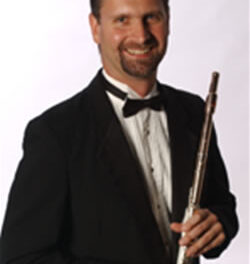Several years ago, it had become fashionable to speak dismissively about Pilobolus, the elastic company from Connecticut whose very name starts up a certain music in my head: The Jefferson Airplane’s “Plastic Fantastic Lover.” Founded in 1971, Pilobolus has remained remarkably true to a philosophy of movement that values community and cooperation and deep play. The dancers’ physical style embodies the qualities of Silly Putty, of Slinkies, of rubberband-propelled airplanes, and of click and lock Lego blocks and wind-up tops. Their work, while full of ideas, is non-verbal, and it certainly is not conceptual — thus the company fell from the pantheon of the avant-garde during the 1990s, when con(ceptual) art was at its zenith.
Happily, that era of disrespect seems to have passed — or receded, wave-like, from the roaring crowd happy to have its dance include some fun. The wave image is a good one, because watching Pilobolus is somewhat like watching the indivisible waves roll ceaselessly in and out. At their best, Pilobolus gives us a way to see the unstopping motion that’s at the core of everything, from sub-atomic particles on out.
In Page Auditorium on June 22, the company opened the first performance in its three-day run at ADF 2006 with a new work, Prism, set to selections of music from several contemporary bands. It took a few minutes for me to catch the flow of this piece, but suddenly I saw it: the crystals turning, the light splitting, the colors flaring — light as wave and as particle, light as energy and as vision — and as radiated emotion.
Following this glimpse of cosmic truth came the Empty Suitor, a delightful solo frolic set to Ben Webster’s version of “Sweet Georgia Brown.” I adore this kind of innocent physical humor, à la Harpo Marx, but dancer Andrew Herro’s clowning also demonstrated some physical truths about the relations of balance and motion. It was a refreshing interlude between the crystalline Prism and the monumental Gnomen.
Gnomen seems to be about the ancient and ever-repeating ritual marking of time’s passage through our years. The Oxford English Dictionary tells us that “gnomen” is an erroneous form of “gnomon,” but perhaps there is a small joke in Pilobolus’ spelling, as each of the four men in turn acts as a gnomon, the hour-marking upright of a sundial; and in some of their arrangements, they demonstrate another meaning of the word, a geometrical figure resulting from the removal of part of a parallelogram. But the important thing seems to be the acknowledgement that time’s divisions are subsumed in time’s flow, and that our human actions to tame and mark time — our Stonehenges, our sundials, our atomic clocks — as necessary as they feel to us — are but bobbing floats in time’s great river.
Memento Mori, another new work, deals with time from the perspective of two lives coming toward their end. An old, bent couple shuffles onto the stage, and we see their lives together flash across our eyes. Youth, courtship, fights, seductions, struggles and pleasures are animated for us in bodies gloriously new and strong. But in the end there is only memory, and its weight bends the backs of its bearers as they slip into the dark wings. This piece is not so recognizably Pilobolean as most, but it moved me to tears.
The evening ended with an absolutely stunning performance of the 1980 work Day Two, set to music by Brian Eno, David Byrne and the Talking Heads, with the company dancing like their blood was made of fire. If they’d been wearing clothes, they would have burned off. Renee Jaworksi had, I swear, sparks flying off her skin. Also particularly notable was North Carolina native (and NC School of the Arts graduate) Manelich Minniefee: powerful and open-visaged, he can be leonine or lamblike from moment to moment.
If you’ve ever wished you could have been there at the beginning of time, this dance is for you. Its life force is tremendous — here’s innocence and the lust for experience both frolicking full-tilt in their new-formed glory; here’s change and growth and recombinant DNA doing its awesome work among the lifeforms in a sweeping landscape. And here’s glorious motion, here’s the wonder of dancing! Pilobolus knows more than most about the physics of motion and about engineering techniques for distributing the load in a structure, and both kinds of knowledge are on full display in this piece, but you don’t think about that at the time. If you are thinking at all, it is something like: I am so glad to be alive!












